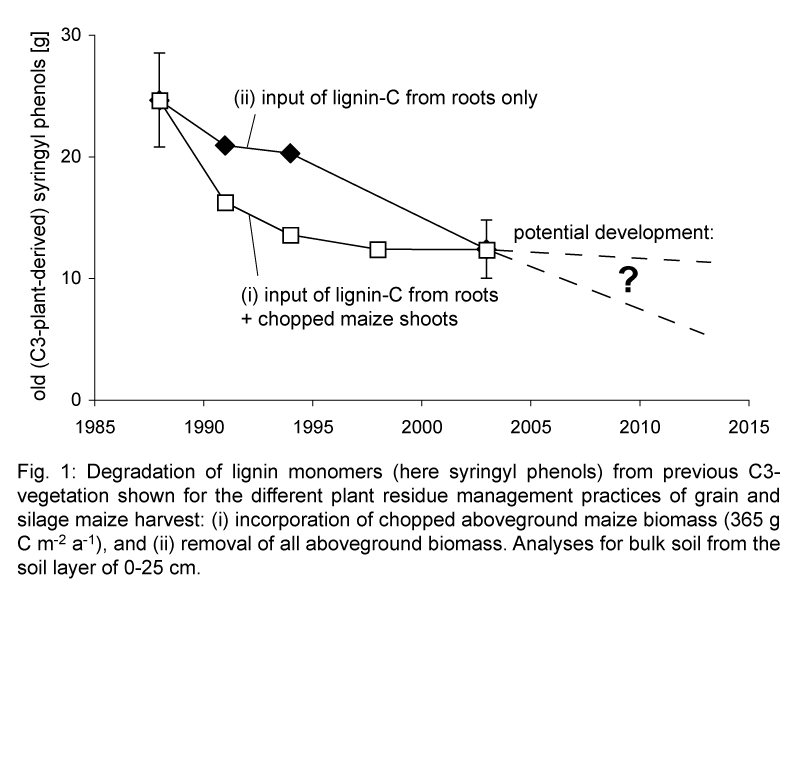
Saturday, 15 July 2006
138-73
Lignin Degradation in an Arable Soil: How Does the input of Plant Residues Affect this Process?.
Anett Hofmann, Alexander Heim, and Michael W. I. Schmidt. Dept of Geography, Univ of Zurich, Winterthurerstrasse 190, 8057 Zürich, Switzerland
Quantification of lignin degradation could improve the understanding of how fast plant residues are transformed into soil organic matter. Two main questions are posed: (i) How does the quantity of lignin monomers change over time? (ii) How does additional input of aboveground plant residues affect lignin degradation? We analyzed arable soil from a time series (15 years) that was naturally 13C labeled by the shift from C3- (wheat) to C4-vegetation (maize). This tracer allows tracking the replacement of C3-plant-derived lignin monomers by new C4-plant-derived lignin monomers. The monomers were extracted from bulk soil by alkaline CuO oxidation. For quantification we used GC-MS (gas chromatography-mass spectroscopy). To distinguish C3-plant-derived from C4-plant-derived lignin, the isotope ratios (13C/12C) of lignin monomers were determined with GC-C-IRMS (gas chromatography-combustion-isotope ratio mass spectroscopy). We compared two common management practices: (i) incorporation of chopped aboveground maize biomass (365 g C m-2 a-1), i.e. grain maize harvest, and (ii) removal of all aboveground biomass, i.e. silage maize harvest. First results suggest that after 15 years, for both management practices about 50% of the old, C3-plant-derived lignin monomers were degraded, and the remaining 50% were apparently unaltered in their chemical constitution. The trend over time, however, seemed to differ for the two management practices (Fig. 1). In the practice that incorporated aboveground plant residues (grain maize harvest) lignin replacement was faster during the first years of the experiment, and then leveled off with no obvious change in the last years. In contrast, in the practice without input from aboveground biomass (silage maize harvest) the old C3-plant-derived lignin monomers were replaced at a relatively constant rate. From the first results it could be hypothesized that additional input of aboveground plant residues may reduce the degradation of old lignin in the long term, although underlying mechanisms are not yet clear. At present we can only speculate that the input of additional above ground biomass initially caused priming, which resulted in increased lignin degradation rates during the first years. However, the protection mechanism that causes degradation to almost cease in the following years remains unknown.

Back to 2.2A Soil Organic Matter: Stabilization and Carbon Sequestration - Poster
Back to WCSS
Back to The 18th World Congress of Soil Science (July 9-15, 2006)